Islands surrounded by US military study area, including Guam and Saipan, call for activity that harms the whales to stop
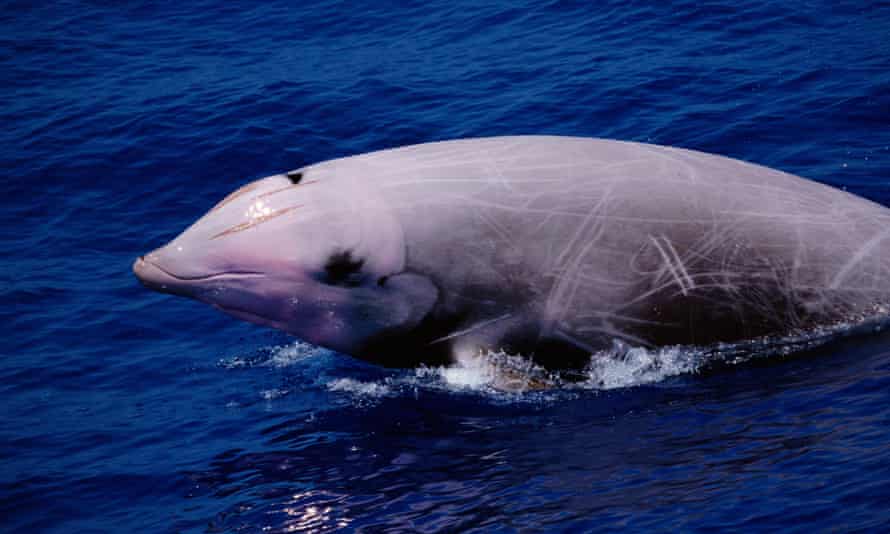
Supported by
 About this content
About this contentJon Letman
Fri 15 Jan 2021 THE GUARDIAN
In the midst of the western Pacific, flanked by the world’s deepest ocean trench, the waters off the Mariana Islands are home and habitat to whales, dolphins, and countless other marine mammals as they breed and feed.
It’s also where they encounter the might of the US military.
The US territory of Guam and the Commonwealth of the Northern Mariana Islands (CNMI), which includes Saipan, Tinian, and 12 other islands, are surrounded by the US military’s Mariana Islands Training and Testing (MITT) study area.
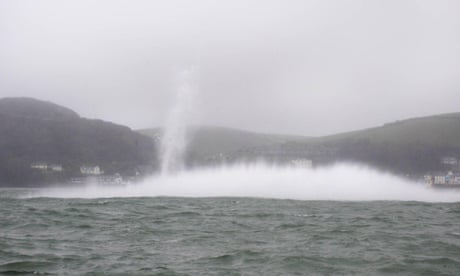
Stop blowing up bombs on sea floor, say whale campaigners
Read more
Almost the size of India, the MITT is strategically important to the Department of Defence as a proving ground for new weapons systems and for live-fire training.
But some on the neighbouring islands, including indigenous Chamoru people, hold grave concerns for the military’s impact on their environment, especially the use of sonar for anti-submarine warfare training, which may be causing whales to beach themselves and die.
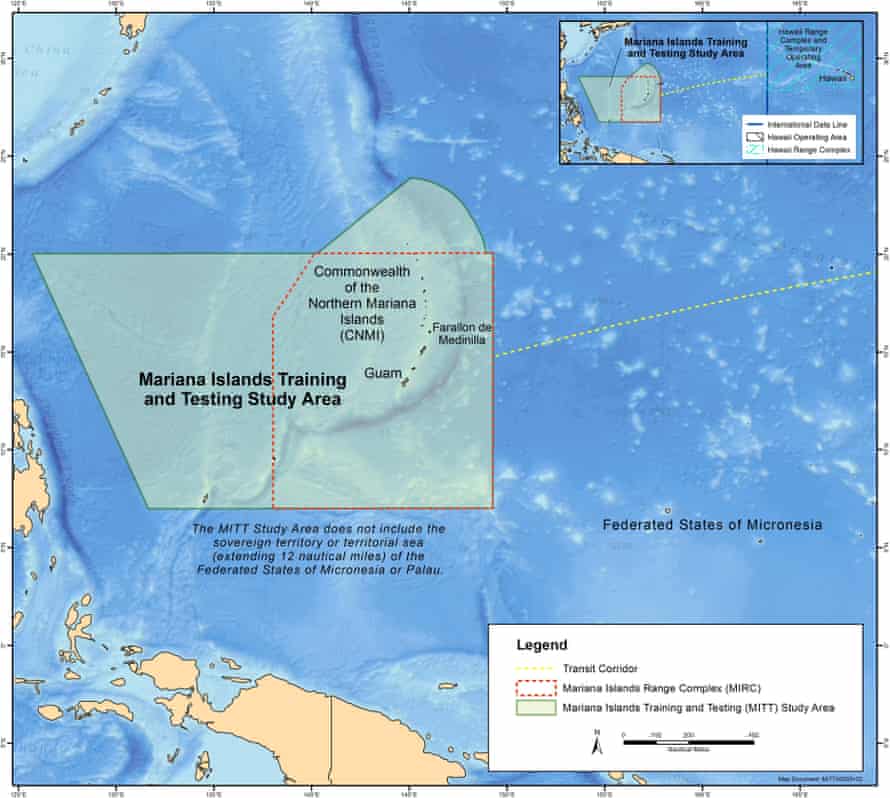
In particular, Cuvier’s beaked whales, known for deep dives documented to last for hours, may be acutely vulnerable to sonar.
Able to dive to nearly 3,000 meters, Cuvier’s beaked whales can feed beyond the reach of competitors and predators, but not out of range of navy sonar.
Since 1998, fisheries biologist with Guam’s department of agriculture, Brent Tibbatts, has documented 30 marine mammal strandings – 13 of them since 2010. The timing of the strandings, and their proximity to sonar, have led him to believe they are related.
When strandings occur, Tibbatts is the first called. If the animal can be saved, it’s pushed back into the water. If it washes up dead – over 80% of the time, Tibbatts told the Guardian – or dies while stranded, Tibbatts performs a necropsy , taking tissue samples, measurements, and photos.
Tibbatts recalled a 2015 live stranding of a Cuvier’s beaked whale which later died. Initially, the military denied it was using sonar, only to later admit it had after divers presented video in which sonar could be heard.
Listening to the inaudible
In February, a team of researchers from the National Oceanic and Atmospheric Administration (NOAA) and Scripps Institution of Oceanography published a study examining how the navy’s use of mid-frequency active sonar may contribute to whale strandings in the Marianas.
The study reported eight stranding events between 2006-2019 involving at least 10 whales.
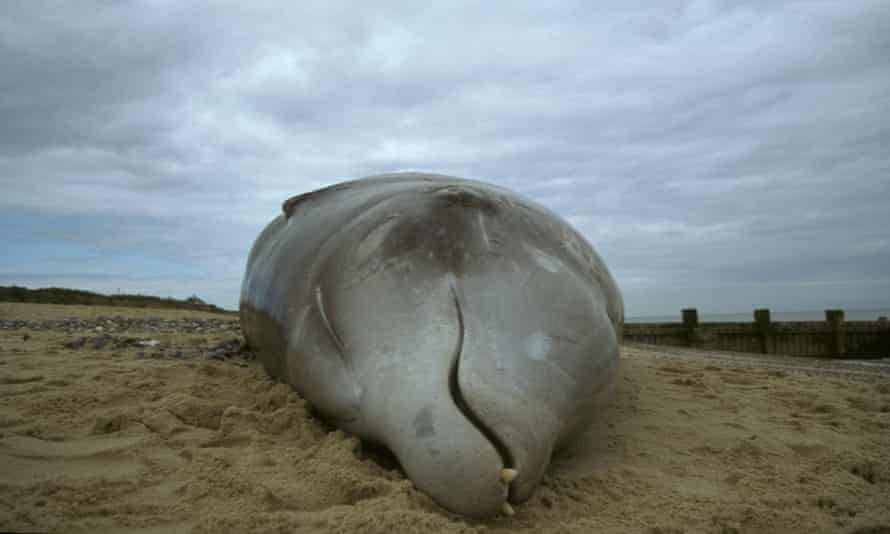
The lead author, acoustic ecologist Dr Anne Simonis, said the team recorded in waters between 600 and 1000 meters off Saipan and Tinian islands at timed intervals for up to 12 months, analysing recordings of the whales’ distinctive echolocation clicks, which fall beyond the range of human hearing but are easily identified using a spectrogram to visually represent sounds.
The team detected three beaked whale species and examined eight Cuvier’s beaked whale strandings, of which three were confirmed to have occurred within six days of sonar use in the area, similar to other beaked whale strandings in other parts the world after anti-submarine activity.
A leading hypothesis suggested sonar may cause the whales to surface too quickly, forming bubbles in their blood or vital organs similar to decompression sickness, known as the bends.
“The number of animals that actually show up dead on the beaches may only be a fraction of the animals that are dying at sea,” said Simonis, saying that far fewer animals in pelagic [open ocean] waters are recovered compared to coastal species, no matter the cause of death.
“It does seem to be clear that beaked whales are more sensitive to navy sonar than other species,” Simonis said.
“There’s still a need to answer some basic questions about beaked whale populations and behaviour before we can understand the impact of sonar-associated strandings.”
Level ‘B’ Harassment
The US Navy declined an interviewed but in an email, Pacific Fleet spokesperson Lieutenant James Adams said: “Whales strand for a wide variety of reasons, including due to natural causes”.
The Center for Naval Analysis analysed complete data, including classified information, Adams said, determining there was “insufficient evidence to claim a relationship between sonar use and beaked whale strandings in the Mariana Islands”.
None of this can be understood without understanding indigenous dispossession and US imperialismIsa Arriola
The navy would not release the number of anti-submarine warfare exercises it has conducted in the Marianas over the last 24 months, but Adams said, “the navy has not exceeded [authorised] sonar and explosive levels,” adding “the navy has trained with active sonar in the region for over 70 years with negligible effects to the marine environment”.
The navy follows strict guidelines, employing protective measures to avoid impacts from at-sea training and testing, Adams said.
Kate Goggin, NOAA fisheries spokeswoman, said the Marine Mammal Protection Act allowed the navy to use sonar and conduct in-water detonations inside the MITT, “which are likely to result in … behavioural disruption, temporary hearing impairment or, in limited cases, permanent hearing impairment [of marine mammals].”
NOAA Fisheries has authorised “Level B harassment” of beaked whales which includes “interruption of feeding behaviours or displacement from areas where and when navy activities are occurring”.
Goggin said low to moderate severity of effects was not expected to impact the survival of beaked whales.
In January 2019, the navy released a 1,400-page MITT draft supplemental overseas environmental impact statement followed by its record of decision, selecting the option that allows for the most activity in the MITT
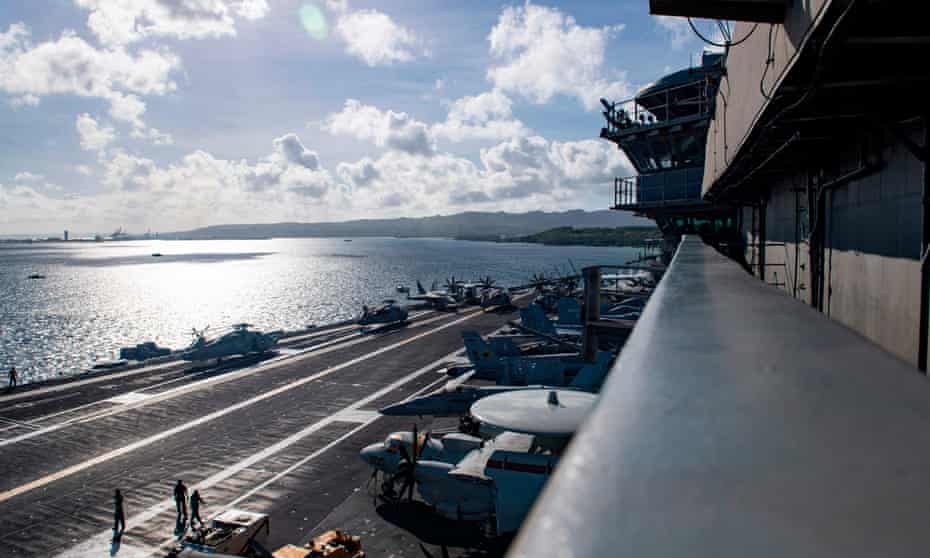
The island of Guam seen from the deck of the USS Theodore Roosevelt. The relationship between the US navy and the islands of Guam and the Northern Marianas are generally strong, but have been strained over the issue of environmental damage. Photograph: Zachary Wheeler/US NAVY/AFP/Getty Images
In response, eight Guamanian senators – led by Senator Kelly Marsh-Taitano – introduced a resolution calling on the navy to “cease its use of active sonar that harms marine mammals; use passive sonar to detect the presence of marine mammals; and provide all information as declared necessary by the government of Guam in order to determine boundaries of habitat areas of beaked whales and other cetaceans”.
In a virtual public hearing in September, Senator Régine Bisco Lee noted protective agreements already exist for Hawaii and California: “We’re just asking that our land and our resources be protected in the same way”.
One ocean, two governments
While both US territories, Guam and CNMI’s distinct governance structures (larger Guam is an unincorporated territory, while CNMI is a commonwealth with is own governor and legislature) complicates protection of the beaked whale habitats.
Edwin Reyes, a government of Guam coastal management program administrator, says co-operation between Guam and CNMI is important in pursuing the common goal of ensuring the navy’s use of sonar is consistent with local policies.
Guam’s size, even small compared to Hawaii, Reyes said, means the impact of human activity is even greater and “puts a lot of strain on our resources”.
On neighbouring Saipan, part of the Marianas, Isa Arriola, chair of the group Our Common Wealth 670, said militarisation was about more than sonar and whales.
“None of this can be understood without understanding indigenous dispossession and US imperialism.”
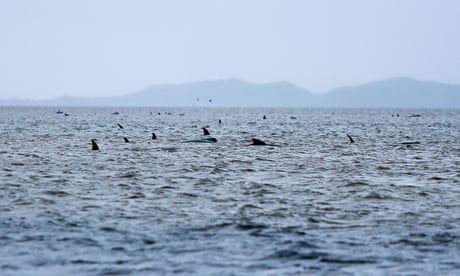
More than 120 whales die in mass stranding on Chatham Islands
Read more
She argued current levels of military activity were “totally unsustainable” and said co-operation between Guam and the CNMI was imperative because “whales and dolphins aren’t restricted by red dotted lines on a map”.
Also on Saipan, CNMI representative Sheila J. Babauta said that while the military has generally been welcome in the commonwealth, the relationship is complex. She has introduced a house joint resolution calling for a halt to all destructive military training.
“If this is happening now and the training and testing is not in full force yet … imagine what’s going to happen in the future.”








/cloudfront-ap-southeast-2.images.arcpublishing.com/nzme/FYZCGKX6MCX2447G6Z3IAMZNYU.jpg)
/cloudfront-ap-southeast-2.images.arcpublishing.com/nzme/SSLGGOLEBN2I4JAURSNANQCN3U.jpg)
/cloudfront-ap-southeast-2.images.arcpublishing.com/nzme/MZUNE55XJLIGXVLZQCDSZVZUYM.jpg)
/cloudfront-ap-southeast-2.images.arcpublishing.com/nzme/RL4FLSIFO3UIX6FRS4FIZQ7XKI.jpg)